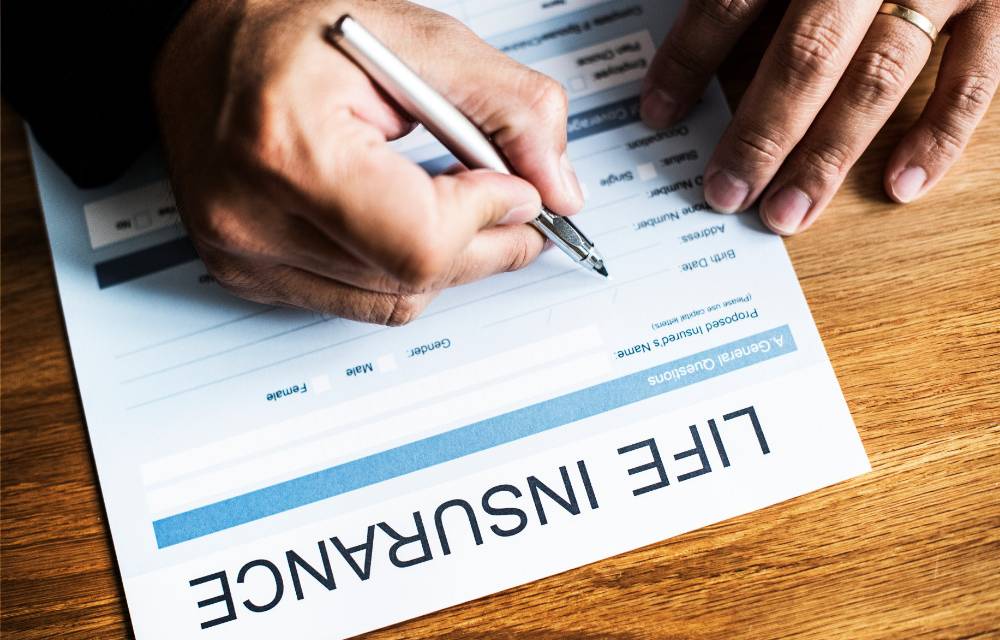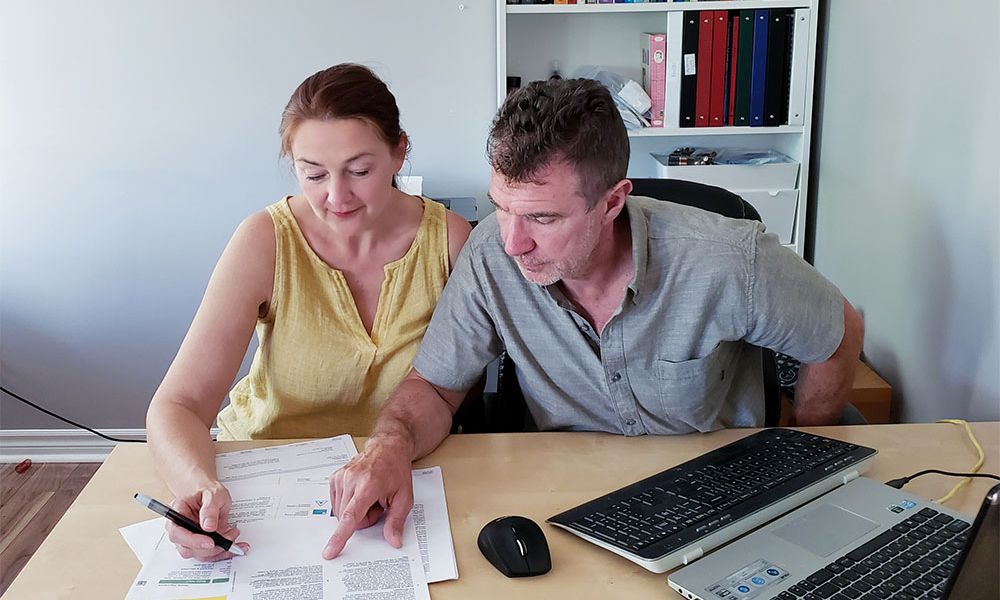
How Much Homeowners Insurance Coverage Do You Really Need?
TABLE OF CONTENTS
Buying a first home comes with lots of new experiences. When you're in the throes of finalizing a mortgage and negotiating inspection details, the purchase of homeowners insurance can be low on your priority list. If you're like most homebuyers, you find a policy your lender approves, you sign the paperwork, and move on to bigger problems.
Beyond satisfying your lender's requirements, you may not think much about the amount of coverage you have. But when the dust settles -- or at least at policy renewal time -- it's smart to question the size of your homeowners' coverage relative to your needs.
Read on for an overview of standard coverages on homeowners insurance, and how to determine if these are sufficient for your situation.
KEY TAKEAWAYS
- 1
Standard homeowners policies include five main types of coverage: dwelling, other structures, personal property, liability, and additional living expenses.
- 2
Your dwelling coverage helps pay to repair or replace your home after a covered incident.
- 3
Pay extra attention to your dwelling coverage limit and your personal liability limits; these are the areas where you need the greatest protections.
What's covered in a standard homeowners policy
Most standard homeowners policies include five types of coverage: dwelling, other structures, personal property, liability, and additional living expenses. Let's look at each.
Dwelling coverage (a.k.a. replacement cost coverage)
Your dwelling coverage pays to repair or replace your home after a covered loss. Your policy language will define the covered losses, but they usually include damage caused by fire, hail, windstorms, theft, vandalism, and explosions. In insurance lingo, these are 'named perils.'1
Standard homeowners' policies exclude damage caused by earthquakes or floods. If you live in an area prone to these disasters, you'd need to purchase supplemental coverage. Your mortgage lender will usually require these when your risk level is high.
There is a dollar limit on your dwelling coverage, as well as a deductible you must pay per claim.
Other structures coverage
Homeowners insurance includes a separate, lower limit to repair or replace other structures on your property after a covered loss. Other structures include fencing, sheds, outbuildings, detached garages, and swimming pools. The named perils are the same as your dwelling coverage.
Normally, your policy caps the other structures coverage at 10% of your dwelling limit.2
Personal property coverage
Homeowners insurance provides protection for your personal belongings, too. These include furniture, clothes, bicycles, etc., stored at your home or elsewhere.
There is also a cap on your personal property coverage. It's usually in the range of 50% to 70% of your dwelling coverage limit -- but that limit can be misleading. Homeowner's policies usually set lower sub-limits for categories of personal property. An example would be a cap of $1,500 on the loss or theft of jewelry. This can make it harder to realize the full value of your coverage limit on personal property.
If your personal property sub-limits are insufficient for, say, your jewelry collection, you can buy scheduled coverage. With scheduled coverage, you itemize high-value items that the policy covers. Your insurer may require appraisals to justify the replacement costs of those goods.3
Personal liability coverage
Personal liability insurance protects you against bodily injury or property damage claims. If you, your kid, or your pet destroys your neighbor's kitchen table, for example, your personal liability coverage could fund all or part of the resulting costs. You can use the funds (up to your policy's stated liability limit) to pay an attorney and to pay any judgments against you.
If the incident also results in your neighbor breaking an ankle, you can apply your coverage to the medical bills as well.4
Note that you cannot submit your own medical bills to your homeowner's policy. Nor will your policy pay for damage you cause to your own personal belongings.
Additional living expenses (ALE)
If a fire burns down your house, your ALE coverage pays some of your living expenses while your home is being rebuilt or repaired. Typically, the policy funds the extra living expenses related to the temporary relocation. That includes hotel costs and restaurant meals, but not your mortgage at the damaged home.5
A common limit on ALE coverage is 30% of your dwelling coverage. This coverage is subject to your deductible.
How much dwelling (replacement) coverage do I need?
Your dwelling coverage limit should be high enough to rebuild your home in the same size and style. The best way to know that number is to hire a local contractor to provide a detailed rebuild estimate. Unfortunately, this is a process you'd have to repeat every few years. Building costs change often, as construction best practices evolve and inflation raises prices on materials.
Sadly, most homeowners never seek out a detailed rebuild estimate. They instead look to their lender to specify a minimum dwelling coverage limit. That approach can be problematic, however. Your lender's requirement protects your outstanding loan balance. It doesn't ensure you can rebuild your home.
Your insurer, too, will recommend a dwelling coverage replacement cost limit. This estimate can also be grossly insufficient -- sometimes even less than your lender's requirement. If you see a disparity between your insurer's recommendation and your lender's requirement, that's your cue to get more information.
At a minimum, consider gathering informal replacement cost estimates. Call local contractors and request a cost range, per square foot, on new construction in the style of your home. Use that range to calculate a rough rebuild estimate.
If your estimate is far more than the insurer's, you may need to shop around. Some insurers don't allow you to buy additional dwelling coverage beyond their recommendation. Others give you the option to raise the limit by up to 150%. The premiums will be higher, but at least you'll have the coverage you need.
How much other structure coverage do I need?
The default level of other structures' coverage -- usually 10% of your dwelling coverage -- should be enough for most households. You can request more coverage if you're worried about expensive structures, like swimming pools or fencing that wraps around your 40-acre property.
According to Berry Insurance, premiums for higher limits on other structures' coverage cost about $0.40 per $100 of added coverage.
Just remember that your coverage here will have the same named perils and exclusions as your dwelling coverage. That means higher limits won't help you with things like earthquakes and floods. Consider the probable causes of damage to your structures as you evaluate if the higher limit is worth the added premium.
How much personal property coverage do I need?
If a fire destroys your home and everything in it, how much would it cost to replace the contents of your home -- clothes, furniture, electronics, jewelry, etc.? Chances are, that amount is more than the default personal property coverage on your homeowner's policy.
In theory, your homeowner's insurance should fund the complete replacement of your personal property. But this isn't always realistic.
As noted, homeowners' policies cap payout limits on expensive items like fine jewelry and collectibles. You can add richer coverage at a cost. The trouble is, the added premiums on these items can be pricey. Sometimes you are better off saving your own money to a dedicated cash account as a form of self-insurance. You could then reach into that account to fund replacements as needed.
Essentially, you're looking for a balance between coverage and the cost of your personal property protections. You want enough protection that you won't be wiped out by a fire or other major disaster. But you don't want so much coverage that the premiums could eventually outpace the value of your stuff.
How much personal liability do I need?
There's no definitive formula to calculate how much personal liability coverage you need. It depends on your circumstances, such as the assets you own and the amount of risk you are willing to accept. The main guideline to know is this: If you are wealthy enough to be a target for lawsuits, you need more personal liability than your standard homeowner's policy will provide.
There is good news, though. You can raise your personal liability limits substantially at a relatively low cost. You can either add liability coverage to your homeowner's policy or buy a separate umbrella policy.
Umbrella coverage functions like an extension to the liability limits on your auto and homeowners insurance. Say your homeowner's policy includes $100,000 of personal liability coverage. If someone slaps you with a $500,000 lawsuit for falling in your home, your homeowner's insurance is responsible for the first $100,000 and your umbrella policy picks up the rest.
For lower-risk households, an umbrella policy can provide $1 million in liability coverage for a few hundred dollars a year. This can be a worthwhile investment -- since liability lawsuits can be expensive and unpredictable.
How much ALE coverage do I need?
Most policies include limited coverage for ALE at no cost. Commonly, the dollar limit is set at 20% of your dwelling coverage. Most insurers will specify a time limit per claim also, such as two years. If your home repairs extend beyond that timeframe, you fund your own added living expenses.6
The purpose of your ALE coverage is to maintain your lifestyle while your home is uninhabitable. If that requires you to spend on hotels, laundry, pet boarding, and transportation, then your ALE coverage helps with those costs. Note that your insurer won't fund an increase in your lifestyle, so lavish meals and hotel rooms are off the table (unless, of course, lavish is your normal way of life).
It's tough to predict how much you could spend on additional level expenses before you're in that situation. If you think the suggested limit on your policy isn't enough, ask if your insurer allows you to buy higher limits.
Getting the Right Amount of Homeowners Insurance
When you're buying homeowners insurance, your priority is to ensure your dwelling coverage limit is sufficient. You can do that informally by collecting average, per-square-foot residential building costs in your area. If you want to go the extra mile, pay a contractor to create an itemized estimate that considers the finishes and unique features of your home.
You probably don't need to investigate added coverage for other structures unless you have a swimming pool or expensive outbuildings. That basic guidance also applies to personal property protection and ALE coverage. If you have expensive stuff or live a lavish lifestyle, ask your insurer about scheduled coverage or higher ALE limits.
Personal liability coverage is an area you might consider extra coverage. Basically, you need a limit that's high enough to protect your net worth. Otherwise, you risk losing everything in a lawsuit. Fortunately, higher liability coverage isn't cost-prohibitive unless you live a high-risk lifestyle.
- SmartFinancial. (2021, November 24). What is a covered peril in homeowners insurance? SmartFinancial. Retrieved November 4, 2022, from https://smartfinancial.com/covered-peril-homeowners-insurance
- Schlichter, S. (2022, February 2). What is other structures coverage on a homeowners policy? NerdWallet. Retrieved November 4, 2022, from https://www.nerdwallet.com/article/insurance/other-structures-coverage
- Fontinelle, A. (2022, September 30). What is personal property coverage? Forbes. Retrieved November 4, 2022, from https://www.forbes.com/advisor/homeowners-insurance/what-is-personal-property-coverage/
- What is covered by standard homeowners insurance? III. (n.d.). Retrieved November 4, 2022, from https://www.iii.org/article/what-covered-standard-homeowners-policy
- Singh, P. (2022, October 12). How additional living expenses coverage works. Insurance.com. Retrieved November 4, 2022, from https://www.insurance.com/home-and-renters-insurance/natural-disasters/additional-living-expenses.html
- Leefeldt, E. (2022, July 21). Additional living expenses (ale) coverage in Home Insurance. Forbes. Retrieved November 4, 2022, from https://www.forbes.com/advisor/homeowners-insurance/additional-living-expenses
TABLE OF CONTENTS


Trying to find the best insurance?
We'll help you find the policy that offers the best value for your situation.
Further Reading

Navigating the Digital Insurance Landscape Considerations
A look at the immense value and high customer lifetime potential within the insurance sector.
Read article

When is Term Life Insurance Worth it?
Decide if term life's advantages are worth it: compare whole vs term life insurance, assess top term providers, and delve into in-depth reviews.
Read article

Insurance Binder: Bridging Between Coverage and Confirmation
From car loans to rental properties, insurance binders are required in a variety of situations. Discover the ins and outs of these essential documents.
Read article

Haven Life Review: Providing Prudent and Protective Policies
Uncover the benefits and drawbacks of Haven Life's term insurance policies, along with eligibility details, pricing, and customer feedback..
Read article
Start Comparing Quotes
Search from our learning center to learn everything from how to easily switch your car insurance to the ins and outs of home insurance.
Fill out just one form and get multiple quotes!


